- Home
- Louis L'Amour
Collection 2008 - Big Medicine (v5.0)
Collection 2008 - Big Medicine (v5.0) Read online
Big Medicine
Louis L’Amour
LEISURE BOOKS NEW YORK CITY
Contents
Cover Page
Title Page
Introduction
Big Medicine
Trail To Pie Town
McQueen of the Tumbling K
Showdown on the Hogback
I
II
III
IV
V
VI
VII
VIII
IX
X
XI
XII
XIII
XIV
XV
XVI
XVII
XVIII
About the Editor
Other Leisure books by Louis L’Amour
Copyright
Introduction
by Jon Tuska
Louis Dearborn LaMoore (1908-1988) was born in Jamestown, North Dakota. He left home at fifteen and subsequently held a variety of jobs although he worked mostly as a merchant seaman. From his earliest youth, L’Amour had a love of verse. His first published work was a poem, “The Chap Worth While,” appearing when he was eighteen years old in his former hometown’s newspaper, the Jamestown Sun. It is the only poem from his early years that he left out of Smoke From This Altar, which appeared in 1939 from Lusk Publishers in Oklahoma City, a book which L’Amour published himself; however, this poem is reproduced in The Louis L’Amour Companion (Andrews and McMeel, 1992) edited by Robert Weinberg. L’Amour wrote poems and articles for a number of small circulation arts magazines all through the early 1930s and, after hundreds of rejection slips, finally had his first story accepted, “Anything for a Pal” in True Gang Life (10/35). He returned in 1938 to live with his family where they settled in Choctaw, Oklahoma, determined to make writing his career. He wrote a fight story bought by Standard Magazines that year and became acquainted with editor Leo Margulies who was to play an important role later in L’Amour’s life. “The Town No Guns Could Tame” in New Western (3/40) was his first published Western story.
During the Second World War L’Amour was drafted and ultimately served with the U.S. Army Transportation Corps in Europe. However, in the two years before he was shipped out, he managed to write a great many adventure stories for Standard Magazines. The first story he published in 1946, the year of his discharge, was a Western, “Law of the Desert Born” in Dime Western (4/46). A call to Leo Margulies resulted in L’Amour’s agreeing to write Western stories for the various Western pulp magazines published by Standard Magazines, a third of which appeared under the byline Jim Mayo, the name of a character in L’Amour’s earlier adventure fiction. The proposal for L’Amour to write new Hopalong Cassidy novels came from Margulies who wanted to launch Hopalong Cassidy’s Western Magazine to take advantage of the popularity William Boyd’s old films and new television series were enjoying with a new generation. Doubleday & Company agreed to publish the pulp novelettes in hard-cover books. L’Amour was paid $500 a story, no royalties, and he was assigned the house name Tex Burns. L’Amour read Clarence E. Mulford’s books about the Bar-20 and based his Hopalong Cassidy on Mulford’s original creation. Only two issues of the magazine appeared before it ceased publication. Doubleday felt that the Hopalong character had to appear exactly as William Boyd did in the films and on television and thus even the first two novels had to be revamped to meet with this requirement prior to publication in book form.
L’Amour’s first Western novel under his own byline was Westward the Tide (World’s Work, 1950). It was rejected by every American publisher to which it was submitted. World’s Work paid a flat £75 without royalties for British Empire rights in perpetuity. L’Amour sold his first Western short story to a slick magazine a year later, “The Gift of Cochise” in Collier’s (7/5/52). Robert Fellows and John Wayne purchased screen rights to this story from L’Amour for $4,000 and James Edward Grant, one of Wayne’s favorite screenwriters, developed a script from it, changing L’Amour’s Ches Lane to Hondo Lane. L’Amour retained the right to novelize Grant’s screenplay, which differs substantially from his short story, and he was able to get an endorsement from Wayne to be used as a blurb, stating that Hondo was the finest Western Wayne had ever read. Hondo (Fawcett Gold Medal, 1953) by Louis L’Amour was released on the same day as the film, Hondo (Warner, 1953), with a first printing of 320,000 copies.
With Showdown at Yellow Butte (Ace, 1953) by Jim Mayo, L’Amour began a series of short Western novels for Don Wollheim that could be doubled with other short novels in Ace Publishing’s paperback two-fers. Advances on these were $800 and usually the author never earned any royalties. Heller With A Gun (Fawcett Gold Medal, 1955) was the first of a series of original Westerns L’Amour had agreed to write under his own name following the success for Fawcett of Hondo. L’Amour wanted even this early to have his Western novels published in hardcover editions. He expanded “Guns of the Timberland” by Jim Mayo in West (9/50) for Guns of the Timberlands (Jason Press, 1955), a hardcover Western for which he was paid an advance of $250. Another novel for Jason Press followed and then Silver Cañon (Avalon Books, 1956) for Thomas Bouregy & Company. These were basically lending library publishers and the books seldom earned much money above small advances paid.
The great turn in L’Amour’s fortunes came about because of problems Saul David was having with his original paperback Westerns program at Bantam Books. Fred Glidden had been signed to a contract to produce two original paperback Luke Short Western novels a year for an advance of $15,000 each. It was a long-term contract but, in the first ten years of it, Fred only wrote six novels. Literary agent Marguerite Harper then pursuaded Bantam that Fred’s brother, Jon, could help fulfill the contract and Jon was signed for eight Peter Dawson Western novels. When Jon died suddenly before completing even one book for Bantam, Harper managed to engage a ghost writer at the Disney studios to write these eight “Peter Dawson” novels, beginning with The Savages (Bantam, 1955). They proved inferior to anything Jon had ever written and what sales they had seemed to be due only to the Peter Dawson name.
Saul David wanted to know from L’Amour if he could deliver two Western novels a year. L’Amour said that he could, and he did. In fact, by 1962 this number was increased to three original paperback novels a year. The first L’Amour novel to appear under the Bantam contract was Radigan (Bantam, 1958).
A basic element to many a range war plot is the villian’s means for crowding out the other ranchers in a district. He brings a giant herd that requires all the available grass and forces all the smaller ranchers out of business. It was this same strategy Bantam used in marketing L’Amour. All of his Western titles were continuously kept in print. Independent distributors were required to buy titles in lots of 10,000 copies if they wanted access to other Bantam titles at significantly discounted prices. In time L’Amour’s paperbacks forced almost every one else off the racks in Western sections. L’Amour himself comprised the other half of this successful strategy. He dressed up in cowboy outfits, traveled about the country in a motor home visiting with independent distributors, taking them to dinner and charming them, making them personal friends. He promoted himself at every available opportunity. L’Amour insisted that he was telling the stories of the people who had made America a great nation and he appealed to patriotism as much as to commercialism in his rhetoric.
Once when we were talking and Louis had showed me his topographical maps and his library of thousands of volumes that he claimed he used for research, he asserted that, if he claimed there was a rock in a road at a certain point in a story, his readers knew that if they went to that spot they would find a rock just as
he described it. I told him that might be so but I personally was troubled by the many inconsistencies in his stories. Take Last Stand At Papago Wells (Fawcett Gold Medal, 1957). Five characters are killed during an Indian raid. One of the surviving characters emerges from seclusion after the at-tact and counts six corpses.
“I’ll have to go back and count them again,” L’Amour said, and smiled. “But, you know, I don’t think the people who read my books would really care.”
There are many fine, and some spectacular, moments in Louis L’Amour’s Western fiction. I think he was at his best in the shorter forms, especially his magazine stories, and the two best stories he ever wrote appeared in the 1950s, “The Gift of the Cochise” early in the decade and “War Party” in The Saturday Evening Post (6/59). The latter was expanded by L’Amour to serve as the opening chapters for Bendigo Shafter (Dutton, 1979). “War Party” possesses several of the characteristics in purest form which I suspect, no matter how diluted they ultimately would become, account in largest measure for the loyal following Louis L’Amour won from his readers: the young male narrator who is in the process of growing into manhood and who is evaluating other human beings and his own experiences; a resourceful frontier woman who has beauty as well as fortitude; a strong male character who is single and hence marriageable; and the powerful, romantic, strangely compelling vision of the American West which invests L’Amour’s Western fiction and makes it such a delightful escape from the cares of a later time—in this author’s words from this story, that “big country needing big men and women to live in it” and where there was no place for “the frightened or the mean.”
Big Medicine
Old Billy Dunbar was down flat on his face in a dry wash swearing into his beard. The best gold-bearing gravel he had found in a year, and then the Apaches would have to show up!
It was like them, the mean, ornery critters. He hugged the ground for dear life and hoped they would not see him, tucked away as he was between some stones where an eddy of the water that once ran through the wash had dug a trench between the stones.
There were nine of them. Not many, but enough to take his scalp if they found him, and it would be just as bad if they saw his burros or any of the prospect holes he had been sinking.
He was sweating like a stuck hog bleeds, lying there with his beard in the sand and the old Sharps .50 ready beside him. He wouldn’t have much a chance if they found him, slithery fighters like they were, but if that old Sharps threw down on them, he’d take at least one along to the happy hunting ground with him.
He could hear them now, moving along the desert above the wash. Where in tarnation were they going? He wouldn’t be safe as long as they were in the country, and this was country where not many white men came. Those few who did come were just as miserable to run into as the Apaches.
The Apache leader was a lean-muscled man with a hawk nose. All of them slim and brown without much meat on them, the way Apaches were, and wearing nothing but breechclouts and headbands.
He lay perfectly still. Old Billy was too knowing in Indian ways to start moving until he was sure they were gone. He lay right there for almost a half hour after he had last heard them, and then he came out of it, cautious as a bear reaching for a honey tree.
When he got on his feet, he hightailed it for the edge of the wash and took a look. The Apaches had vanished. He turned and went down the wash, taking his time and keeping the old Sharps handy. It was a mile to his burros and to the place where his prospect holes were. Luckily he had them back in a draw where there wasn’t much chance of their being found.
Billy Dunbar pulled his old gray felt hat down a little tighter and hurried on. Jennie and Julie were waiting for him, standing head to tail so they could brush flies off each other’s noses.
When he got to them, he gathered up his tools and took them back up the draw to the rocks at the end. His canteens were full, and he had plenty of grub and ammunition. He was lucky that he hadn’t shot that rabbit when he saw it. The Apaches would have heard the bellow of the old Sharps and come for him, sure. He was going to have to be careful.
If they would just kill a man, it wouldn’t be so bad, but these Apaches liked to stake a man out on an anthill and let the hot sun and ants do for him, or maybe the buzzards—if they got there soon enough.
This wash looked good, too. Not only because water had run there, but because it was actually cutting into the edge of an old riverbed. If he could sink a couple of holes down to bedrock, he’d bet there’d be gold and gold aplenty.
When he awakened in the morning, he took a careful look around his hiding place. One thing, the way he was located, if they caught him in camp, they couldn’t get at him to do much. The hollow was perhaps sixty feet across, but over half of it was covered by shelving rock from above; the cliff ran straight up from there for an easy fifty feet. There was water in a spring and enough grass to last the burros for quite some time.
After a careful scouting around, he made a fire of dead mesquite, which made almost no smoke, and fixed some coffee. When he had eaten, Dunbar gathered up his pan, pick, shovel, and rifle, and moved out. He was loaded more than he liked, but it couldn’t be helped.
The place he had selected to work was the inside of the little desert stream. The stream took a bend and left a gravel bank on the inside of the elbow. That gravel looked good. Putting his Sharps down within easy reach, Old Billy got busy.
Before sundown he had moved a lot of dirt and tried several pans, loading them up and going over to the stream. Holding the pan under the water, he began to stir the gravel, breaking up the lumps of clay and stirring until every piece was wet. Then he picked out the larger stones and pebbles and threw them to one side. He put his hands on opposite sides of the pan and began to oscillate it vigorously under water, moving it in a circular motion so the contents were shaken from side to side.
With a quick glance to make sure there were no Apaches in sight, he tipped the pan slightly, to an angle of about thirty degrees so the lighter sands, already buoyed up by the water, could slip out over the side.
He struck the pan several good blows to help settle the gold, if any, and then dipped for more water and continued the process. He worked steadily at the pan, with occasional glances around until all the refuse had washed over the side but the heavier particles. Then, with a little clean water, he washed the black sand and gold into another pan, which he took from the brush where it had been concealed the day before.
For some time he worked steadily. Then, as the light was getting bad, he gathered up his tools and, concealing the empty pan, carried the other with him back up the wash to his hide out.
He took his Sharps and crept out of the hide out and up the wall of the cañon. The desert was still and empty on every side.
“Too empty, durn it!” he grumbled. “Them Injuns’ll be back. You can’t fool an Apache.”
Rolling out of his blankets at sunup, he prepared a quick breakfast, and then went over his takings of the day with a magnet. The black sand was mostly particles of magnetite, ilmenite, and black magnetic iron oxide. What he couldn’t draw off, he next eliminated by using a blow box.
“Too slow, with them Apaches around,” he grumbled. “A man workin’ down there could mebbe do sixty, seventy pans a day in that sort of gravel, but watchin’ for Injuns ain’t goin’ t’help much.”
Yet he worked steadily, and by nightfall, despite interruptions, he had handled more than fifty pans. When the second day was over, he grinned at the gold he had. It was sufficient color to show he was on the right track. Right here, by using a rocker, he could have made it pay, but he wasn’t looking for peanuts.
He had cached his tools along with the empty pan in the brush at the edge of the wash. When morning came, he rolled out and was just coming out of the hide out when he saw the Apache. He was squatted in the sand, staring at something, and, despite his efforts to keep his trail covered, Dunbar had a good idea what that something would be. He drew back i
nto the hide out.
Lying on his middle, he watched the Indian get to his feet and start working downstream. When he got down there a little farther, he was going to see those prospect holes. There would be nothing Dunbar could do then. Nor was there anything he could do now. So far as he could see, only one Apache had found him. If he fired to kill the Indian, the others would be aware of the situation and come running.
Old Billy squinted his eyes and pondered the question. He had a hunch that Indian wasn’t going to go for help. He was going to try to get Dunbar by himself, so he could take his weapons and whatever else he had of value.
The Indian went downstream farther and slipped out of sight. Billy instantly ducked out into the open and scooted down the cañon into the mesquite. He dropped flat there, and inched along in the direction the Indian had gone.
He was creeping along, getting nearer and nearer to his prospect holes, when suddenly instinct or the subconscious hearing of a sound warned him. Like a flash, he rolled over, just in time to see the Indian leap at him, knife in hand!
Billy Dunbar was no longer a youngster, but he had lived a life in the desert, and he was as hard and tough as whalebone. As the Apache leaped, he caught the knife wrist in his left hand, and stabbed at the Indian’s ribs with his own knife. The Apache twisted away, and Billy gave a heave. The Indian lost balance. They rolled over, and then fell over the eight-foot bank into the wash.
Luck was with Billy. The Indian hit first, and Billy’s knife arm was around him, with the point gouging at the Indian’s back. When they landed, the knife went in to the hilt.
Billy rolled off, gasping for breath. Hurriedly he glanced around. There was no one in sight. Swiftly he clawed at the bank, causing the loosened gravel to cave down, and in a few minutes of hot, sweating work the Indian was buried.
Turning, Billy lit out for his hideaway, and, when he made it, he lay there, gasping for breath, his Sharps ready. There would be no work this day. He was going to lie low and watch. The other Indians would come looking, he knew.

 Novel 1987 - The Haunted Mesa (v5.0)
Novel 1987 - The Haunted Mesa (v5.0) The Haunted Mesa (Louis L'Amour's Lost Treasures)
The Haunted Mesa (Louis L'Amour's Lost Treasures) The Walking Drum (Louis L'Amour's Lost Treasures)
The Walking Drum (Louis L'Amour's Lost Treasures) Fallon (Louis L'Amour's Lost Treasures)
Fallon (Louis L'Amour's Lost Treasures)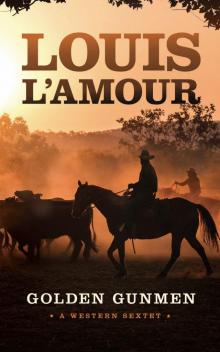 Golden Gunmen
Golden Gunmen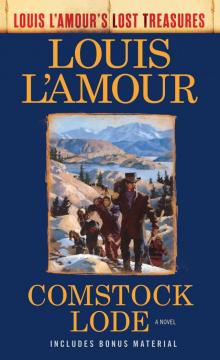 Comstock Lode
Comstock Lode The Lonesome Gods (Louis L'Amour's Lost Treasures)
The Lonesome Gods (Louis L'Amour's Lost Treasures) No Traveller Returns (Lost Treasures)
No Traveller Returns (Lost Treasures) Yondering: Stories
Yondering: Stories The Strong Land
The Strong Land Reilly's Luck (Louis L'Amour's Lost Treasures)
Reilly's Luck (Louis L'Amour's Lost Treasures) The Man Called Noon (Louis L'Amour's Lost Treasures)
The Man Called Noon (Louis L'Amour's Lost Treasures) Draw Straight
Draw Straight Last of the Breed (Louis L'Amour's Lost Treasures)
Last of the Breed (Louis L'Amour's Lost Treasures) Taggart (Louis L'Amour's Lost Treasures)
Taggart (Louis L'Amour's Lost Treasures) The Hopalong Cassidy Novels 4-Book Bundle
The Hopalong Cassidy Novels 4-Book Bundle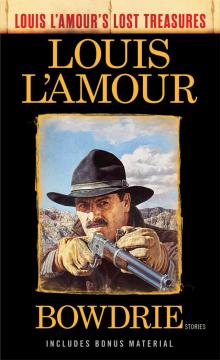 Bowdrie_Louis L'Amour's Lost Treasures
Bowdrie_Louis L'Amour's Lost Treasures Reilly's Luck
Reilly's Luck The Ferguson Rifle (Louis L'Amour's Lost Treasures)
The Ferguson Rifle (Louis L'Amour's Lost Treasures) Sacketts 00 - The Sackett Companion (v5.0)
Sacketts 00 - The Sackett Companion (v5.0) The Chick Bowdrie Short Stories Bundle
The Chick Bowdrie Short Stories Bundle Novel 1974 - The Californios (v5.0)
Novel 1974 - The Californios (v5.0)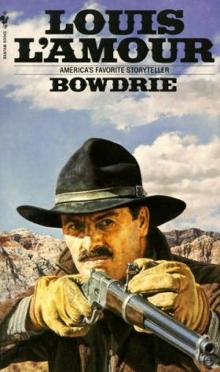 Collection 1983 - Bowdrie (v5.0)
Collection 1983 - Bowdrie (v5.0) Novel 1984 - The Walking Drum (v5.0)
Novel 1984 - The Walking Drum (v5.0) Over on the Dry Side
Over on the Dry Side The Walking Drum
The Walking Drum Novel 1963 - Catlow (v5.0)
Novel 1963 - Catlow (v5.0)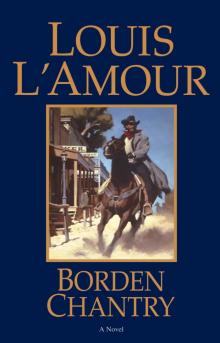 Borden Chantry
Borden Chantry Collection 1983 - Law Of The Desert Born (v5.0)
Collection 1983 - Law Of The Desert Born (v5.0) Ghost Towns
Ghost Towns Jubal Sackett (1985) s-4
Jubal Sackett (1985) s-4 Novel 1953 - Showdown At Yellow Butte
Novel 1953 - Showdown At Yellow Butte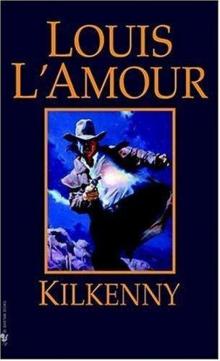 Kilkenny 03 - Kilkenny (v5.0)
Kilkenny 03 - Kilkenny (v5.0)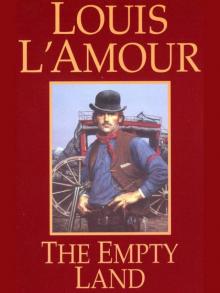 Novel 1969 - The Empty Land (v5.0)
Novel 1969 - The Empty Land (v5.0)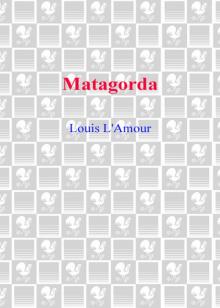 Matagorda
Matagorda The First Fast Draw
The First Fast Draw Novel 1950 - Westward The Tide (v5.0)
Novel 1950 - Westward The Tide (v5.0) Ride the Dark Trail s-18
Ride the Dark Trail s-18 Novel 1963 - Fallon (v5.0)
Novel 1963 - Fallon (v5.0) Novel 1964 - Kiowa Trail (v5.0)
Novel 1964 - Kiowa Trail (v5.0) Kilkenny
Kilkenny Riders of the Dawn
Riders of the Dawn Sackett (1961) s-9
Sackett (1961) s-9 Fallon
Fallon Ride the River (1983) s-5
Ride the River (1983) s-5 Mojave Crossing s-11
Mojave Crossing s-11 Novel 1958 - Radigan (v5.0)
Novel 1958 - Radigan (v5.0) The Collected Short Stories of Louis L'Amour, Volume Five
The Collected Short Stories of Louis L'Amour, Volume Five Novel 1953 - Showdown At Yellow Butte (v5.0)
Novel 1953 - Showdown At Yellow Butte (v5.0) Collection 1980 - Yondering
Collection 1980 - Yondering Novel 1957 - Last Stand At Papago Wells (v5.0)
Novel 1957 - Last Stand At Papago Wells (v5.0) North To The Rails
North To The Rails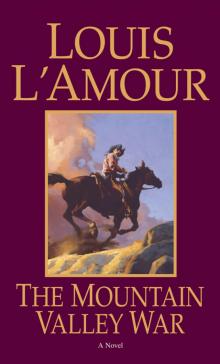 The Kilkenny Series Bundle
The Kilkenny Series Bundle Novel 1972 - Callaghen (v5.0)
Novel 1972 - Callaghen (v5.0) Novel 1970 - Reilly's Luck (v5.0)
Novel 1970 - Reilly's Luck (v5.0)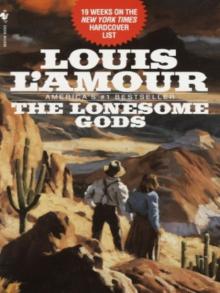 The Lonesome Gods
The Lonesome Gods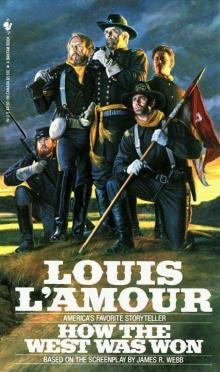 Novel 1963 - How The West Was Won (v5.0)
Novel 1963 - How The West Was Won (v5.0) Collection 2001 - May There Be A Road (v5.0)
Collection 2001 - May There Be A Road (v5.0) Flint
Flint Novel 1968 - Chancy (v5.0)
Novel 1968 - Chancy (v5.0) Volume 1: Unfinished Manuscripts, Mysterious Stories, and Lost Notes from One of the World's Most Popular Novelists
Volume 1: Unfinished Manuscripts, Mysterious Stories, and Lost Notes from One of the World's Most Popular Novelists Novel 1962 - High Lonesome (v5.0)
Novel 1962 - High Lonesome (v5.0) Fair Blows the Wind (Louis L'Amour's Lost Treasures)
Fair Blows the Wind (Louis L'Amour's Lost Treasures) Lando s-8
Lando s-8 The High Graders
The High Graders Collection 1986 - Night Over The Solomons (v5.0)
Collection 1986 - Night Over The Solomons (v5.0) The Collected Short Stories of Louis L'Amour, Volume 3
The Collected Short Stories of Louis L'Amour, Volume 3 Collection 1980 - Yondering (v5.0)
Collection 1980 - Yondering (v5.0) Showdown
Showdown The Quick And The Dead
The Quick And The Dead Novel 1968 - Down The Long Hills (v5.0)
Novel 1968 - Down The Long Hills (v5.0) The Lonely Men s-14
The Lonely Men s-14 Bowdrie (Louis L'Amour's Lost Treasures)
Bowdrie (Louis L'Amour's Lost Treasures) Treasure Mountain s-17
Treasure Mountain s-17 Novel 1959 - Taggart (V5.0)
Novel 1959 - Taggart (V5.0)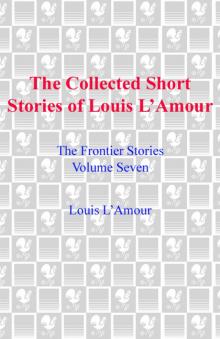 The Collected Short Stories of Louis L'Amour, Volume 7
The Collected Short Stories of Louis L'Amour, Volume 7 Novel 1957 - The Tall Stranger (v5.0)
Novel 1957 - The Tall Stranger (v5.0) Novel 1978 - The Proving Trail (v5.0)
Novel 1978 - The Proving Trail (v5.0) Callaghen (Louis L'Amour's Lost Treasures)
Callaghen (Louis L'Amour's Lost Treasures) Sitka
Sitka Collection 1988 - Lonigan (v5.0)
Collection 1988 - Lonigan (v5.0) The Californios
The Californios Novel 1966 - The Broken Gun (v5.0)
Novel 1966 - The Broken Gun (v5.0)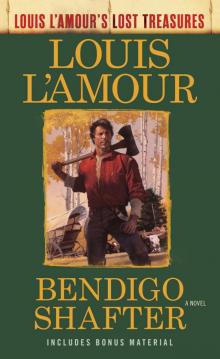 Bendigo Shafter (Louis L'Amour's Lost Treasures)
Bendigo Shafter (Louis L'Amour's Lost Treasures) Novel 1979 - The Iron Marshall (v5.0)
Novel 1979 - The Iron Marshall (v5.0)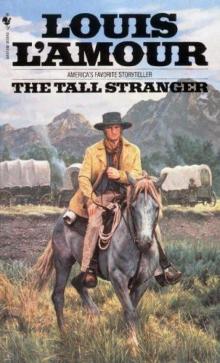 Novel 1957 - The Tall Stranger
Novel 1957 - The Tall Stranger Novel 1965 - The Key-Lock Man (v5.0)
Novel 1965 - The Key-Lock Man (v5.0) Collection 1986 - Dutchman's Flat (v5.0)
Collection 1986 - Dutchman's Flat (v5.0) Lonely On the Mountain s-19
Lonely On the Mountain s-19 Sackett's Land
Sackett's Land The Man Called Noon
The Man Called Noon Hondo (Louis L'Amour's Lost Treasures)
Hondo (Louis L'Amour's Lost Treasures) The Lawless West
The Lawless West The Warrior's Path (1980) s-3
The Warrior's Path (1980) s-3 Novel 1956 - Silver Canyon (v5.0)
Novel 1956 - Silver Canyon (v5.0) The Sky-Liners (1967) s-13
The Sky-Liners (1967) s-13 Mustang Man s-15
Mustang Man s-15 Novel 1971 - Tucker (v5.0)
Novel 1971 - Tucker (v5.0) Off the Mangrove Coast (Louis L'Amour's Lost Treasures)
Off the Mangrove Coast (Louis L'Amour's Lost Treasures) Collection 2005 - Riding For The Brand (v5.0)
Collection 2005 - Riding For The Brand (v5.0) Collection 1986 - The Trail To Crazy Man (v5.0)
Collection 1986 - The Trail To Crazy Man (v5.0) Silver Canyon
Silver Canyon The Man from Battle Flat
The Man from Battle Flat The Daybreakers (1960) s-6
The Daybreakers (1960) s-6 Kid Rodelo (Louis L'Amour's Lost Treasures)
Kid Rodelo (Louis L'Amour's Lost Treasures) Milo Talon
Milo Talon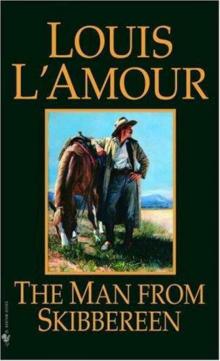 Novel 1973 - The Man From Skibbereen (v5.0)
Novel 1973 - The Man From Skibbereen (v5.0) Novel 1965 - The High Graders (v5.0)
Novel 1965 - The High Graders (v5.0) The Sacket Brand (1965) s-12
The Sacket Brand (1965) s-12 Rivers West
Rivers West Novel 1970 - The Man Called Noon (v5.0)
Novel 1970 - The Man Called Noon (v5.0) Education of a Wandering Man
Education of a Wandering Man The Collected Short Stories of Louis L'Amour, Volume 1
The Collected Short Stories of Louis L'Amour, Volume 1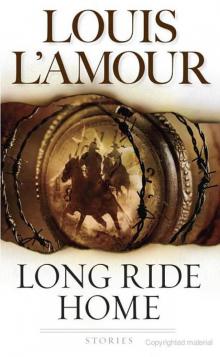 Collection 1989 - Long Ride Home (v5.0)
Collection 1989 - Long Ride Home (v5.0) Callaghen
Callaghen Collection 1999 - Beyond The Great Snow Mountains (v5.0)
Collection 1999 - Beyond The Great Snow Mountains (v5.0) West of the Tularosa
West of the Tularosa End Of the Drive (1997) s-7
End Of the Drive (1997) s-7 Novel 1986 - Last Of The Breed (v5.0)
Novel 1986 - Last Of The Breed (v5.0)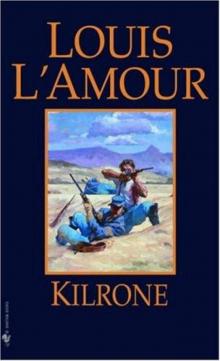 Novel 1966 - Kilrone (v5.0)
Novel 1966 - Kilrone (v5.0) Chancy
Chancy Desert Death-Song
Desert Death-Song Novel 1959 - The First Fast Draw (v5.0)
Novel 1959 - The First Fast Draw (v5.0) Kilkenny 02 - A Man Called Trent (v5.0)
Kilkenny 02 - A Man Called Trent (v5.0) Lost Trails
Lost Trails Novel 1972 - Callaghen
Novel 1972 - Callaghen Novel 1966 - Kid Rodelo (v5.0)
Novel 1966 - Kid Rodelo (v5.0) The Collected Short Stories of Louis L'Amour, Volume 2
The Collected Short Stories of Louis L'Amour, Volume 2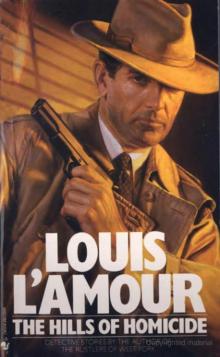 Collection 1983 - The Hills Of Homicide (v5.0)
Collection 1983 - The Hills Of Homicide (v5.0) Novel 1969 - Conagher (v5.0)
Novel 1969 - Conagher (v5.0) Radigan
Radigan High Lonesome
High Lonesome Bendigo Shafter
Bendigo Shafter Novel 1954 - Utah Blaine (As Jim Mayo) (v5.0)
Novel 1954 - Utah Blaine (As Jim Mayo) (v5.0) Collection 1990 - Grub Line Rider (v5.0)
Collection 1990 - Grub Line Rider (v5.0)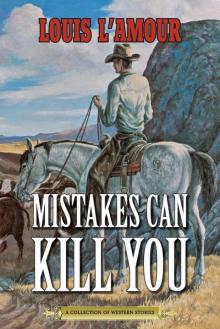 Mistakes Can Kill You
Mistakes Can Kill You The Iron Marshall
The Iron Marshall Novel 1963 - Dark Canyon (v5.0)
Novel 1963 - Dark Canyon (v5.0) Novel 1955 - Heller With A Gun (v5.0)
Novel 1955 - Heller With A Gun (v5.0) Novel 1978 - Bendigo Shafter (v5.0)
Novel 1978 - Bendigo Shafter (v5.0)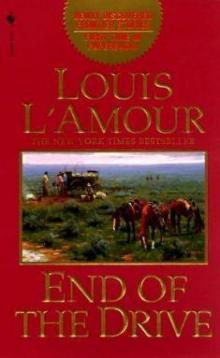 Collection 1997 - End Of The Drive (v5.0)
Collection 1997 - End Of The Drive (v5.0) Fair Blows the Wind
Fair Blows the Wind Talon & Chantry 07 - North To The Rails (v5.0)
Talon & Chantry 07 - North To The Rails (v5.0) The Trail to Crazy Man
The Trail to Crazy Man To the Far Blue Mountains (1976) s-2
To the Far Blue Mountains (1976) s-2 Collection 1981 - Buckskin Run (v5.0)
Collection 1981 - Buckskin Run (v5.0) Collection 2008 - Big Medicine (v5.0)
Collection 2008 - Big Medicine (v5.0) Collection 2003 - From The Listening Hills (v5.0)
Collection 2003 - From The Listening Hills (v5.0)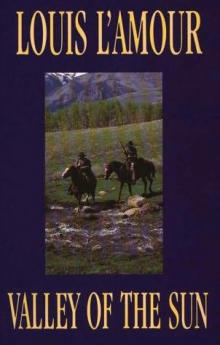 Collection 1995 - Valley Of The Sun (v5.0)
Collection 1995 - Valley Of The Sun (v5.0) Glory Riders
Glory Riders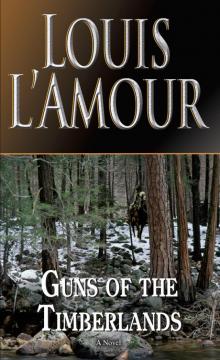 Guns of the Timberlands
Guns of the Timberlands The Collected Short Stories of Louis L'Amour, Volume Four
The Collected Short Stories of Louis L'Amour, Volume Four Novel 1968 - Brionne (v5.0)
Novel 1968 - Brionne (v5.0)